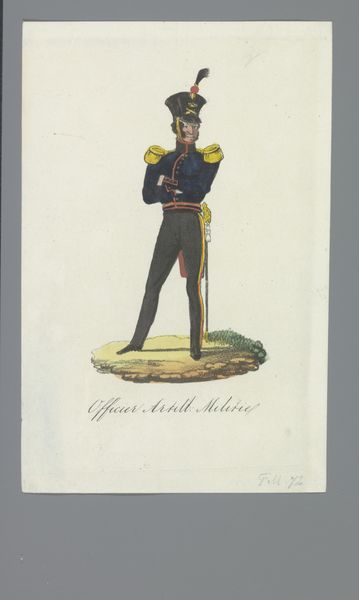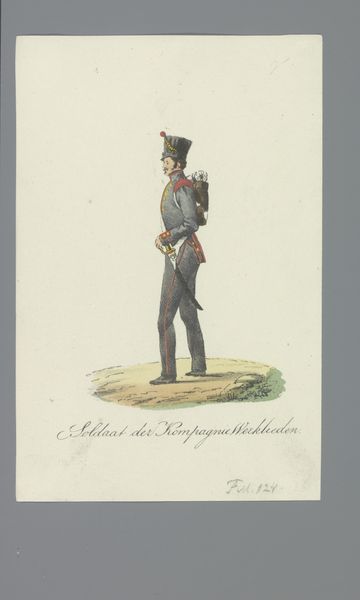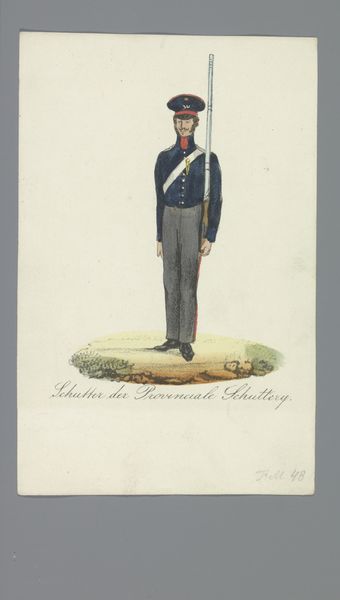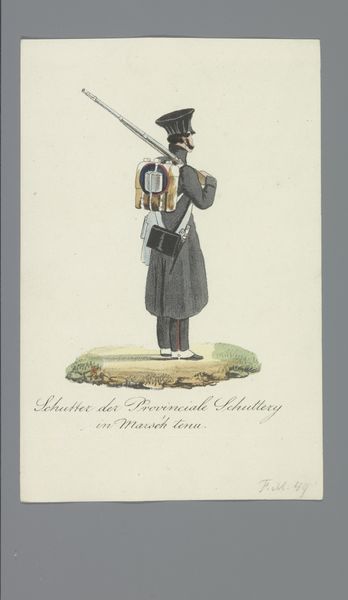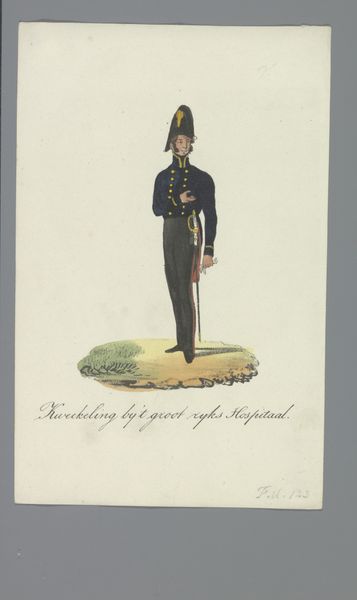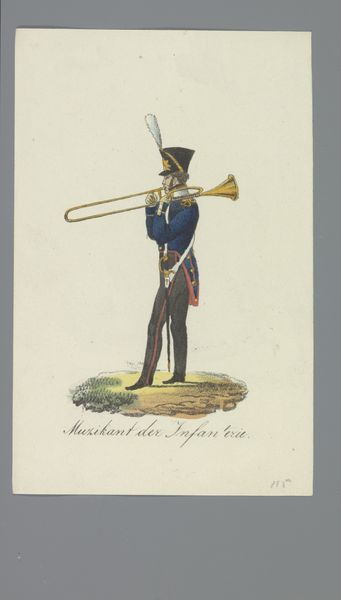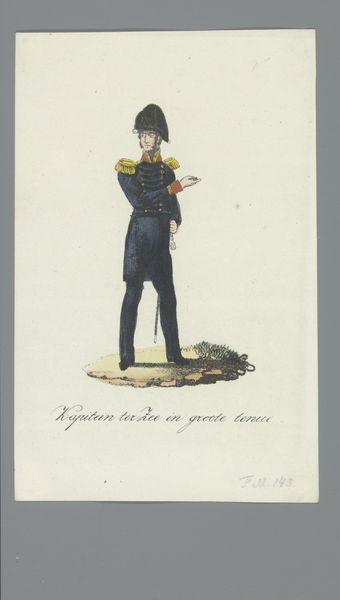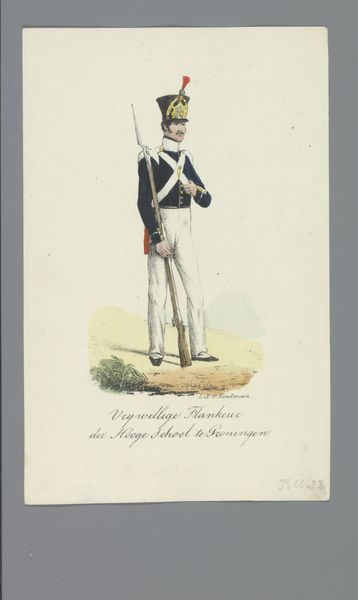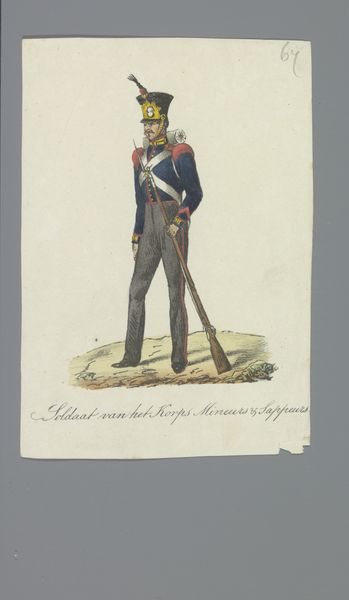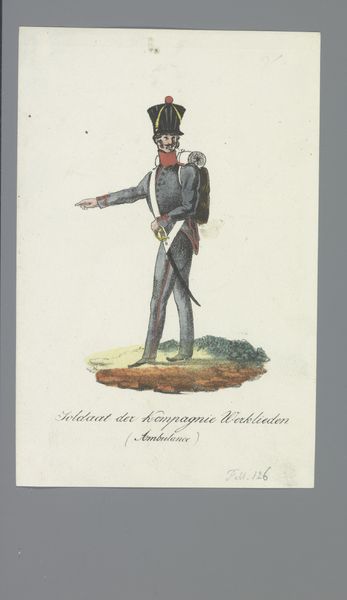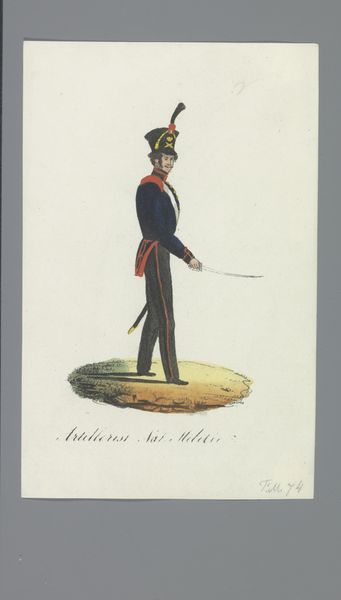
watercolor
#
portrait
#
watercolor
#
romanticism
#
costume
#
art nouveau
#
watercolour illustration
#
genre-painting
Dimensions: height 170 mm, width 110 mm
Copyright: Rijks Museum: Open Domain
Albertus Verhoesen made this print of a militiaman, likely sometime in the mid-19th century, using etching and hand-colouring. The etching process involves coating a metal plate with a waxy, acid-resistant substance, then drawing through this coating to expose the metal. Acid is then applied to bite into the exposed lines, creating grooves that hold ink. This plate is then printed, transferring the image to paper. The application of watercolor adds vibrancy and realism. Consider the labour involved: from the initial preparation of the metal plate, the draughtsmanship of the design, the skilled application of acid, the careful inking and printing, and the final hand-colouring. Each stage demands time and expertise. In a pre-photographic age, such prints played a crucial role in disseminating visual information about military uniforms and civic duty. By focusing on the materiality and making of this print, we recognize the convergence of artistic skill, craft techniques, and social documentation, blurring the boundaries between art and historical record.
Comments
No comments
Be the first to comment and join the conversation on the ultimate creative platform.

